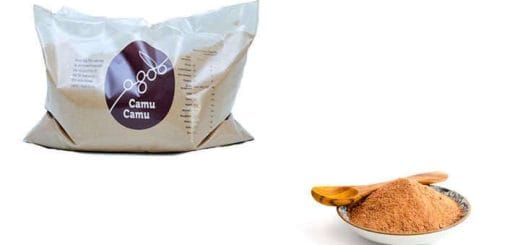Taking chocolate every day has properties and benefits for health. If you take it every day you should know that it is a very nutritious food, capable of activating serotonin secretion, stimulating pleasure when it touches the palate, and offering a range of active ingredients when metabolized.
In addition to being an irresistible food, uncontrollable for many people, its effects can change mood and create a sense of well-being.
This, along with the qualities that make it an ideal dessert after meals, as a snack, or to nibble at any time, brings it to homes around the world.
Contents
What is chocolate
Taken in the form of truffles, as an ingredient in a cake, in a cup, with churros, or in white or dark form, it can mix with other ingredients to make it spicy, salty, or sweet.
There are many ways to consume chocolate, as well as ways to prepare it and brands to use depending on its properties.
Pure chocolate is lactose-free, although there are varieties that contain it when prepared with milk.
 Although most people know what it is, others may be curious to discover that chocolate comes from pure cacao, from the seeds of the “Theobrama cacao” plant.
Although most people know what it is, others may be curious to discover that chocolate comes from pure cacao, from the seeds of the “Theobrama cacao” plant.
In its natural form, it is not what we know, as it needs to undergo several processes in which some active ingredients are extracted from the cacao seeds to make 72% chocolate and others with different qualities and purities. To produce it, it is prepared from cacao butter. This is the fat with all the properties and benefits that will later contribute to the quality and organoleptic qualities, flavor, aroma, and texture on the palate.
Depending on the use, you will need to buy Slim chocolate, truffles, fondant, or brands like Pacari, Valor, Milka, etc.
So let’s first look at the different types of chocolates to delve into their varieties and properties so that you can choose the best chocolate in the world, at least for your needs.
Types of chocolates

- Dark.
- White.
- Milk chocolate.
- Slim
- In a cup.
- Truffles.
- Fondant.
- Baking chocolate.
- Belgian.
- Swiss.
- Gluten-free.
Today, there is a wide variety of types of chocolate. Some are sold in bars of 100, 200, 300 grams, while others are sold in powder form.
Additionally, there are versions of chocolate for melting, the so-called “fondant,” which becomes liquid at a certain temperature.
Dark
It is the most well-known and encompasses most of the chocolates. It is presented in bars of different sizes and purity depending on the brand. Each manufacturer creates its variants trying to reach the taste of the greatest number of consumers possible.
Dark chocolate is different from the others because it does not contain milk and must have at least 45% cacao.
White chocolate
It is a variety made with cacao butter, sugar, and milk. Its name comes from the color. It is white with ivory tones. In the United States and the European Union, white chocolate must contain at least 20% cacao to receive this designation.
The rest of the ingredients in sugars and dairy solids vary from place to place.
Milk chocolate
 Made with different percentages ranging from 25% to 40% cacao, it is the most appreciated by children. The composition of milk chocolate is:
Made with different percentages ranging from 25% to 40% cacao, it is the most appreciated by children. The composition of milk chocolate is:
- 25 to 40 percent cacao.
- Milk.
- Sugar.
- Hazelnuts.
- Almonds
It is very common to add hazelnuts to enhance its flavor as well as include whole almonds inside the bars.
Regarding the quantities of the other ingredients, they vary depending on the brand. The more cacao it contains, the stronger its flavor, greater exciting effects, and the increase in price is exponential.
Slim
This is one of the most current variants. Due to the demand from many people who love this sweet but also want to watch their figure, a special Slim chocolate type has been developed. The so-called “Slim” is actually not the same, although it contains a portion of it.
Within the slimming chocolate or thin chocolate there are also differences. Some brands are making it drinkable, with berries like acai, green coffee, goji berries, ganoderma lucidum, and chia. Some even add around 2% L-carnitine, an extract that enhances the fat-burning effect when physical exercise is increased.
Belgian
 It is a denomination for one of the finest and highest quality types. Belgian chocolate is very famous for having a different, intense flavor with high quality. Its taste is unique and comes from the original in St. Hubert in Brussels when it was introduced to improve the taste of medicines.
It is a denomination for one of the finest and highest quality types. Belgian chocolate is very famous for having a different, intense flavor with high quality. Its taste is unique and comes from the original in St. Hubert in Brussels when it was introduced to improve the taste of medicines.
The best Belgian chocolates are highly appreciated worldwide, whether sold in bars, bonbons, or as artisanal chocolate without added vegetable fat to maintain its maximum quality, flavor, and aroma.
If you want to buy authentic Belgian chocolate, you should look for the “Ambao” quality seal, and if you like expensive options, you can try brands like Corné, Galler, or Neuhaus.
Properties and Benefits
- Reduces blood pressure.
- Stimulates blood circulation to the neurons.
- Improves mood.
- Increases blood sugar levels.
- Eliminates fatigue.
Many of chocolate’s benefits are related to brain function. When you eat it and it enters the bloodstream, its active ingredients are capable of modifying mood and activating secretion, thus correcting low serotonin levels in the blood. This property of chocolate plays a very important role in neuronal activity and the central nervous system’s condition.
Differences with Slim chocolate
The composition says it all. The usual one, pure or dark chocolate, is made with cacao and sugar, while Slim is a blend with plants and natural extracts designed to accelerate fat metabolism and support the effects of a slimming diet.
The idea is to maintain the sweet taste and some of the properties of chocolate by adding the active ingredients from the other extracts. So, Slim chocolate is a weight-loss product but maintains the taste of regular chocolate.
Dark or White Chocolate
Because its production contains different ingredients, the final result, as expected, also shows different properties and benefits.
- Pure and dark chocolate contains traces of theobromine, while white chocolate does not, and if it does, it is in very small amounts. The color, as well as part of the energy effect, is due to this natural element of cacao.
- Another particularity that differentiates them is their use in baking. White chocolate is harder to manipulate and should be handled with care when heated, as cacao butter may separate from the other ingredients.
- Dark chocolate is less sweet, sometimes bitter depending on the level of purity.
- Dark chocolate becomes more bitter as the cacao percentage increases.
Cacao content in chocolate
- Dark: More than 44% cacao.
- White: More than 20% cacao.
- Milk chocolate: Between 25% and 50% cacao.
- With hazelnuts: Has between 8% and 40% cacao, like Nocilla, Nutella, and similar spreadable products. They use a mix of cacao and hazelnuts to achieve a characteristic flavor.
- With cereals: 8% to 10%, but it can also reach up to around forty percent.
- Fondant: Has 40% cacao paste.
- Covering: 31% or 32% cacao butter.



